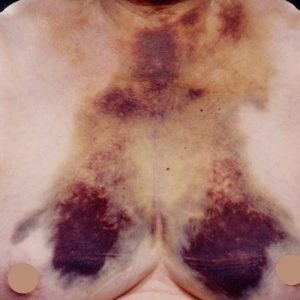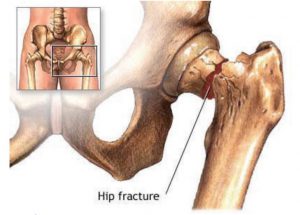Information
Impact Injuries
Common traumas that athletes often suffer include rib and sternal fractures. That’s because any direct blow to the chest may trigger such injuries. These include direct impacts from hard objects such as sticks, bats, projectiles, or even human body parts like the elbow.
Likewise, stressful activities such as golf or rowing that involve excessive use of the chest wall and recurrent muscular contractions can also make the rib cage and sternum prone to traumas, including torn cartilage, bruises, or fractures.
The rib cage holds an important place in the human body as it encloses crucial organs such as the heart and the lungs. Therefore, any rib injuries resulting from direct blows may lead to life-threatening conditions like breathing problems, punctured lungs, or aortic rupture.

An image depicting extensive bruising on the chest, with visible purple and red discoloration covering large areas of the skin



RIBS
Symptoms of rib injuries
Most rib injuries are difficult to diagnose. However, observing the symptoms may help in identifying the underlying issue. Common symptoms associated with rib cage injuries include,
- Localized pain in the chest at the site of impact
- Pain during rib cage movements, such as breathing, laughing or coughing
- Trouble in breathing
- Crepitus (crackling sounds) audible during chest movement
- Muscular spasm of the ribcage
- Ribcage deformation
injury
Blunt force is the common cause of injury
A direct blow on the chest wall or the ribs often gives rise to chest injuries. Some common symptoms attributed to ribcage traumas include the following.
- Motor vehicle accidents – for example, slamming the chest against the steering wheel
- Crush injuries – for example, a heavy object landing directly on the chest
- Sports-related injuries – for example, a heavy tackle
- Falling from a reasonable height – for example, off a roof or ladder
- Assault – for example, getting hit by a baseball bat.
Hip Injuries
Age Care Injuries
In the case of elderly individuals, age-related injuries predominantly include hip fractures. Such traumas may arise during a fall because of the underlying weakness of the hip joint.
Hip fractures are not easy to manage for older people as they can directly result in painful consequences, including posture deformities and loss of independent movement. As a result, hip injuries expose the victims to intense pain and high morbidity and mortality rates.
Alongside physical and health-related issues, these traumas also bring along financial troubles. Managing these issues requires arranging dedicated social care and healthcare services that are often expensive.
Therefore, implementing adequate preventive measures for hip injuries is inevitable.
Common strategies that can facilitate proactive detection of risk factors include,
- Alleviating chances of a fall or an accident
- Adequate prevention and treatment of osteoporosis
- Wearing anti-hip fracture protectors to safeguard hip joints

